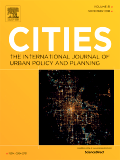Šimon, Martin, Vašát, Petr, Poláková, Markéta, Gibas, Petr, Daňková, Hana. 2019. „Activity spaces of homeless men and women measured by GPS tracking data: A comparative analysis of Prague and Pilsen“. Cities. 86 (3): 145 - 153. ISSN 0264-2751. Available from: https://www.sciencedirect.com/science/article/pii/S0264275118305912
The aim of this article is to investigate the factors that influence the size of activity spaces of homeless men and women in cities. Vulnerable population groups such as the homeless face the risk of mobility challenges that can exacerbate their social exclusion even more through mobility-driven spatial exclusion. The extent of an individual’'s activity space is a key precondition for the daily coping strategies and life opportunities of homeless people. This study is the first to combine GPS tracking of homeless people based on a week-long GPS measurement with mobility interviews. The article tests five hypotheses as to the influence of city size, age, gender, housing situation and education on the size of activity space. Data obtained for a large city (Prague) and for a small city (Pilsen) are analysed using three geospatial measurements of activity spaces. In line with mixed-method approaches, the results are further triangulated through mobility interviews. By mapping the objective activity spaces, we were able to evaluate the role of individual and contextual factors in shaping homeless life and discuss the theoretical and practical implications of activity space measurement for social policy and urban planning.
Authors
- RNDr. Martin Šimon, Ph.D.
- Mgr. Petr Vašát, Ph.D.
- PhDr. Markéta Horpeniaková, Ph.D.
- Petr Gibas, Ph.D.
- Mgr. Hana Daňková
Topics
City and Village, Research Methodology, Migration and Mobility, Social Inequalities, Social Policy
